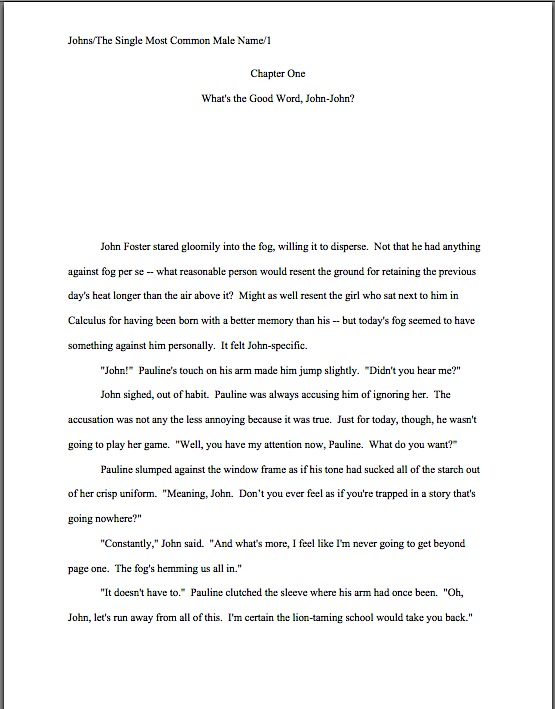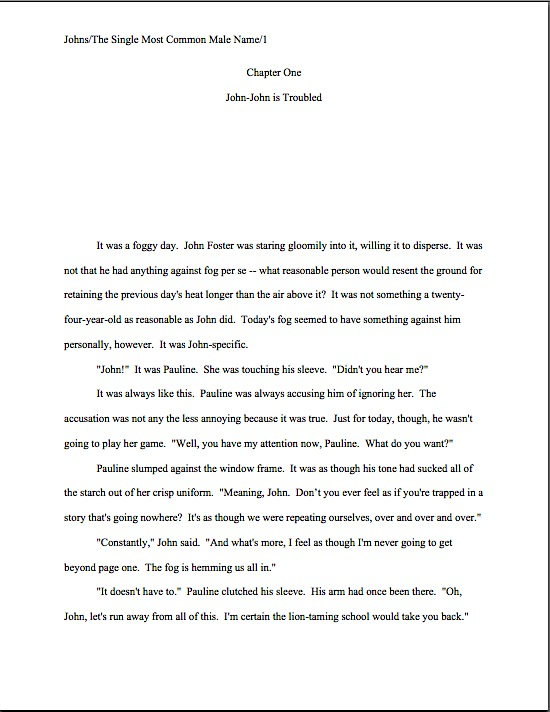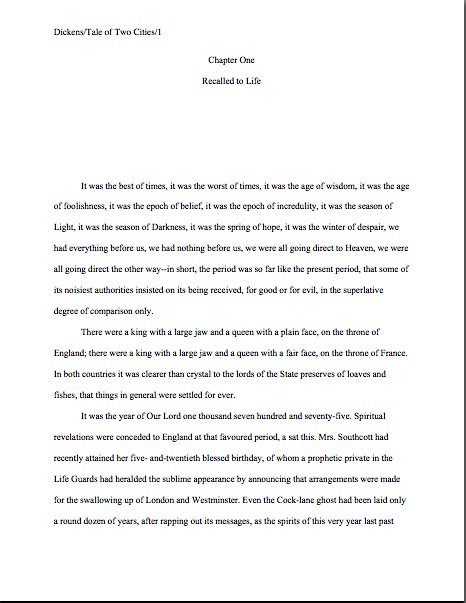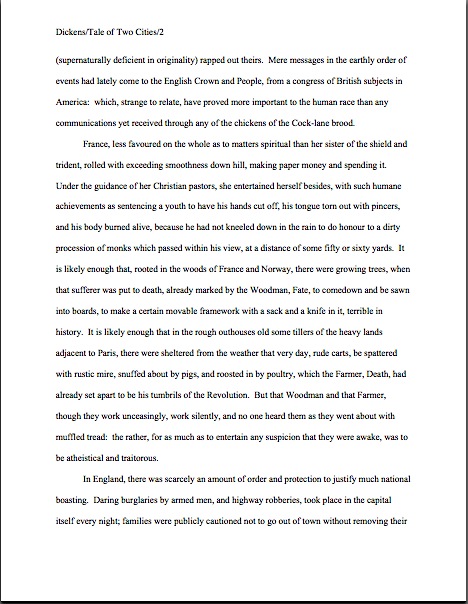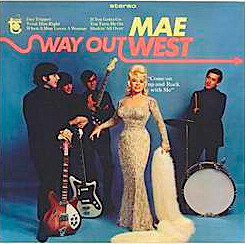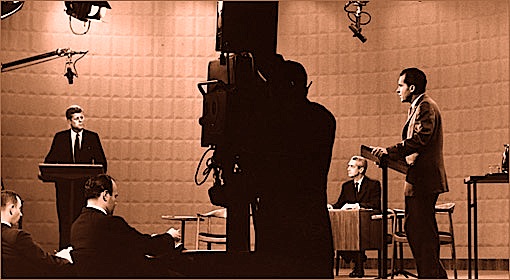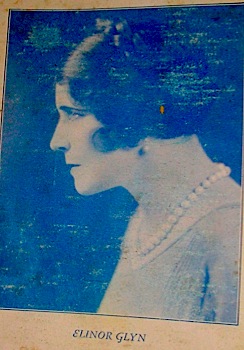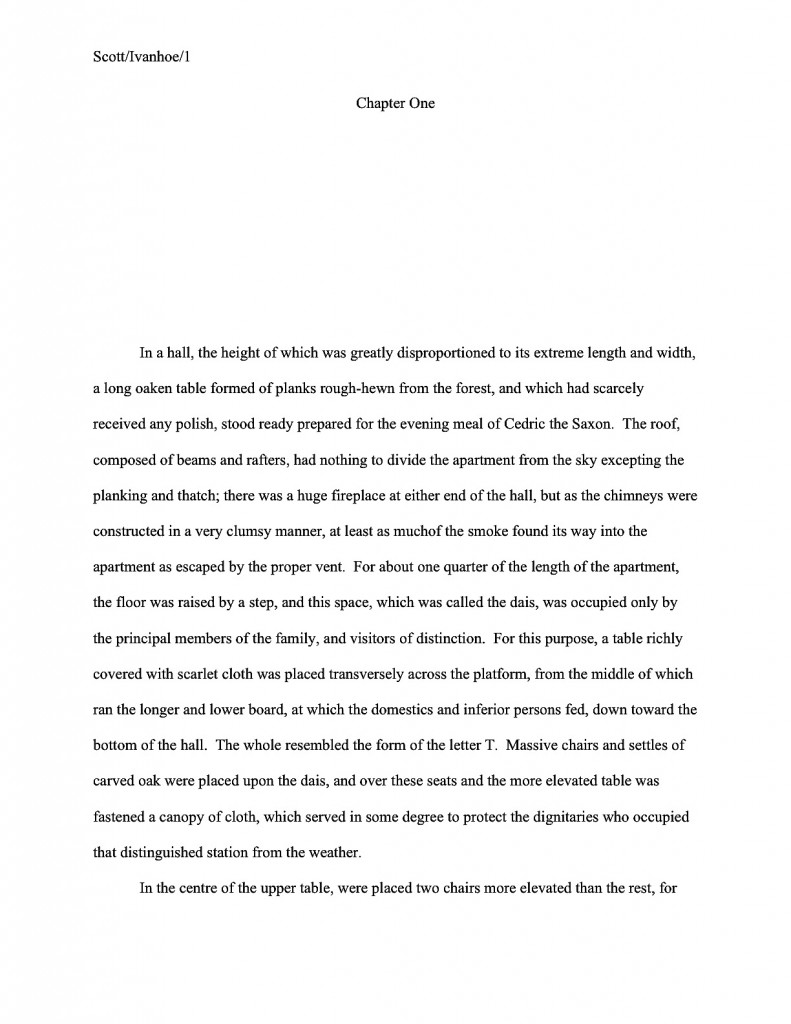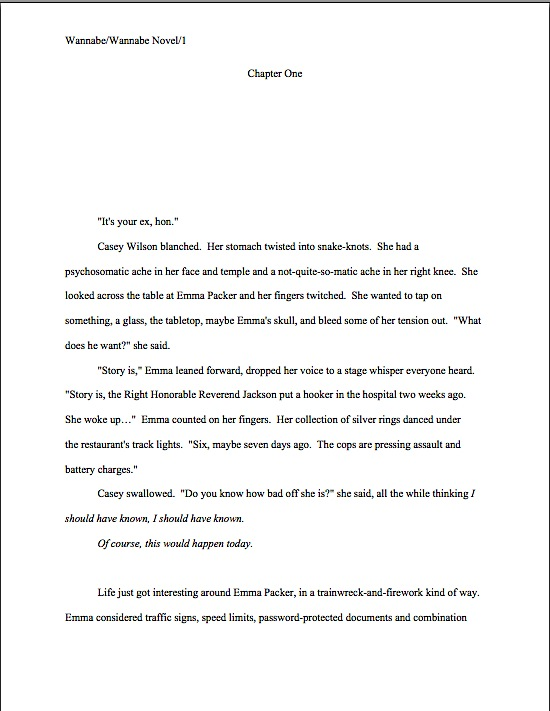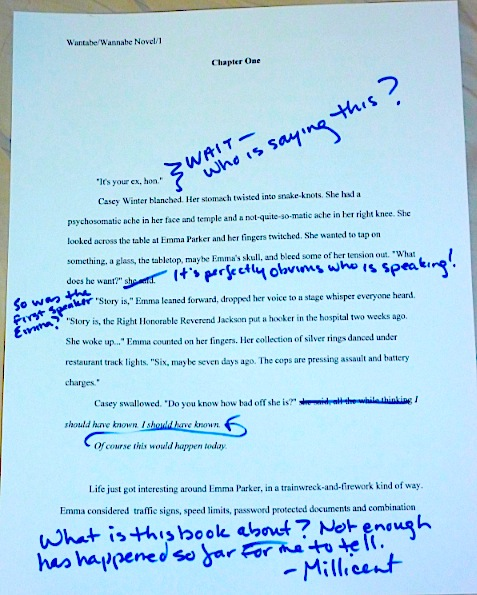This morning, I was puzzled into wakefulness by my fiancé’s waving a soy latte and a freshly-baked pretzel under my nose. A new German bakery has opened in our neighborhood, and he’s terrified that it will go out of business without our daily support. A reliable source for Black Forest cake is not to be taken for granted, after all.
Now, I’m as fond of a good pretzel as the next person, but at 8 a.m., I must confess, mustard-laden food options are generally not the first to pop to mind. Nor is rock salt my favorite pillow covering, given my druthers.
Rick, however, subscribes to the surprisingly pervasive school of thought that holds what a person has said she liked once, ever, will come as a pleasant surprise to receive at any randomly-selected moment for the rest of her life. Or so I surmise from the fact that he could not resist pointing out that I had apparently enjoyed a remarkably similar pretzel only two afternoons before.
Which, of course, would render it even less likely that I would want another one now. The pretzel was turning out to be pretty tasty, though, so rather than take the time to explain at length that piling on more of a good thing does not necessarily improve, well, anything, I decided it would be the better part of valor to thank him graciously and bear my usual breakfast into a more appropriate environment for consuming something warm and squishy. As I fled, I marveled at how, once again, the muses had tumbled all over themselves to provide me with a delightfully apt metaphor for a craft issue you and I were already discussing.
Oh, hadn’t the pretzel-paragraph construction parallel hit you instantly? Allow me to recast it as a self-editing aphorism for the ages, then: what might read beautifully as a stand-alone sentence may not work as well within the context of a page of text. Varying word choice and sentence structure will usually provide the reader with a more pleasurable reading experience than a narrative’s insisting that if something looked good on the page once, it will necessarily look great if it’s repeated.
For the last couple of posts, I’ve been talking about how professional readers tend to respond to repetition in submissions. (To summarize their reaction for those of you joining us mid-series: not at all well.) I cannot in good conscience round off my lobbying for reduced repetition in your manuscripts, though, without discussing those ever-popular transients passing through Conjunction Junction: and, but, and then.
Positive legions of hands shoot into the air. Yes, grammar mavens? “But Anne,” you point out, and rightly so, “then isn’t a conjunction! Why, then, would you include it in your discussion of conjunctions, when there are so many legitimate conjunctions — yet, for instance — deserving of your august scrutiny?”
Quite right, hand-wavers: when used properly, then isn’t strictly speaking a conjunction. However, enough writers are using it these days as if it were a synonym for and in a list of actions (as in The Little Red Hen kneaded the bread, baked it, then fed it to her forty-seven children.) that I feel justified in — nay, compelled to — treat it as such for the purposes of our ongoing discussion of repetitive sentence structures and their predictably negative effect on Millicent the agency screener’s weary peepers.
Language does grow and change, of course. Back in the bad old days, when dinosaurs roamed the earth Roosevelts were presidents Dorothy Parker was still speaking to Ernest Hemingway editors like Maxwell Perkins called the shots in the publishing world, it was considered hugely improper to begin any sentence with and, but, or then; amongst the literate, these words were purely intra-sentence phenomena. As my Uncle Alex (a fairly well-known SF short story writer in the 1950s, an editor at the LA Free Press, and a stickler for grammar for his entire life) used to scrawl in the margins of letters I had written when he returned them to me, a conjunction, by definition, connects one part of a sentence to another.
“Therefore,” he would ink in large letters, “a conjunction may not begin a sentence. How’s your mother?”
There are easier things than growing up in a family of writers and editors. Toward the end of his long, colorful, and occasionally scurrilous life, Uncle Alex was even known to shout grammatical advice at the TV screen when newscasters –sacre bleu! — began their sentences with conjunctions. And really, who could blame him?
(I couldn’t resist. Hey, a pretzel is not exactly the breakfast of champions.)
Time and the language have been marching merrily onward, however, and at this point in North American history, it’s considered quite acceptable to begin the occasional sentence with a conjunction. I do it here all the time. So do most bloggers, journalists, and columnists: it’s a recognized technique for establishing an informal, chatty narrative voice.
That mournful crashing sound you just heard was Uncle Alex stomping his feet on the floor of heaven, trying to get all of us to cut it out, already, but there can be perfectly legitimate stylistic reasons to open a sentence with a conjunction. They can, for instance, be very valuable for maintaining an ongoing rhythm in a paragraph. Like so:
Ghislaine spotted the train pulling into the station. But would Arbogast be on it? He would — he had to be. And if he wasn’t, well, she was just going to have to call him to find out why. Or not. Anyway, she wasn’t going to waste her energy speculating on what would be a moot point the second Arbogast stepped off that train and caught her in his arms.
As Uncle Alex would undoubtedly have been the first (and last, and middle) to tell you, classic English grammar has an elegant means of preventing those conjunctions from hanging out at the beginnings of those sentences: by eliminating the periods and replacing them with commas. The result would look a little something like this:
Ghislaine spotted the train pulling into the station, but would Arbogast be on it? He would — he had to be, and if he wasn’t, well, she was just going to have to call him to find out why — or not. Anyway, she wasn’t going to waste her energy speculating on what would be a moot point the second he stepped off that train and caught her in his arms.
To old-fashioned eyes, this paragraph’s meaning is identical to the first; it is merely cleaner grammatically. However, I suspect that most current readers of English prose would recognize a substantial difference in the rhythm. A period is, as the English like to call it, a full stop; a comma, on the other hand, indicates a pause. A dash indicates a slightly longer and more pointed pause. To this millennium’s sensibilities, the first example has a choppiness, a breathless quality that conveys the subtle impression that Ghislaine’s breathing is shallow, her pulse racing.
The periods my uncle would have forbidden, then, could be regarded as subtle narrative indicators of protagonist stress. At least to those in the habit of breaking paragraphs down into their constituent parts to see what their functions are. Like, say, most of us who read manuscripts for a living.
Before we leave that last set of examples, did you happen to notice any other editorial pet peeves in that first? No? Okay, let me whip out my editorial machete pen and remove a couple of Millicent’s pet peeves. Rather than merely noticing that this third version reads better, why not challenge your revision skills by trying to figure out why?
Ghislaine spotted the train pulling into the station, but would Arbogast be on it? He would — he had to be, and if he wasn’t, well, she was just going to have to call him to find out why. Right now, she wasn’t going to waste her energy speculating on what would be a moot point the second he stepped off that train and caught her in his arms.
How did you do? Take a nice, shiny gold star from petty cash if you immediately cried, “Why, word repetition is word repetition, Anne — which is why you removed the second Jason in the paragraph.” Stack another star on top of the first if you added, “Anyway is often how speakers inform hearers that they’ve digressed from their point. Is there a reason the narrative should go out of its way to inform readers that it has digressed?” And give yourself three more stars if you have gotten in touch with your inner Millicent sufficiently to have mused, “You know, to find out why — or not is conceptually unnecessary. And would the paragraph lose any actual meaning if I cut or not?”
I hear those of you who did not shout any of those three observations muttering under your collective breath, and you’re quite right: this is nit-picky stuff. Both good writing and professional presentation are made up of lots and lots of nit-picky stuff. Your point?
While you’re trying to come up with a sufficiently scathing comeback for that one, let’s tie the anyway revelation (i.e., that what’s considered acceptable in everyday speech may not work so well in a narrative voice on paper, even if it happens to be in the first person), back to our ongoing discussion of and and but. Since conjunction-opened sentences can sometimes mirror actual speech better than more strictly grammatical ones, the former can be a positive boon to dialogue.
Seem paradoxical? Okay, contrast this sterling exchange:
“And I tell you, Spencer, it was eerie. I’m never going back into that deserted house again. And that’s final.”
“But Yvette, you’re backing recklessly away from the conventions of our chosen genre! You’re a scantily-clad, unattached female who screams easily, often while tossing your dreamy long red (or blonde) hair. You are fleet of foot in the face of danger. Yet you are astonishingly prone to tripping over easily-avoidable bits of bracken your surer-footed male counterparts and non-ingénue sidekicks never seem to twist their ankles navigating. And, naturally, you are entirely unarmed. Therefore, you must return to face the danger that any sane person would take extreme measures to avoid!”
“Or what? Or you’re going to turn me in to the Stereotype Enforcement Police?”
“Or else, that’s all.”
“Fine. Then give me the key to the tool shed.”
“If you insist. But don’t come crying to me when an axe comes crashing through your door at the closed-for-the-season hotel.”
with the same dialogue after the conjunctions have been tucked into the middle of the sentences:
“I tell you, Spencer, it was eerie. I’m never going back into that deserted house again. That’s final.”
“Yvette, you’re backing recklessly away from the conventions of our chosen genre! You’re a scantily-clad, unattached female who screams easily, often while tossing your dreamy long red (or blonde) hair. You are fleet of foot in the face of danger, yet surprisingly prone to tripping over easily-avoidable bits of bracken your surer-footed male counterparts and non-ingénue sidekicks never seem to twist their ankles navigating. Naturally, you are entirely unarmed. Therefore, you must return to face the danger that any sane person would take extreme measures to avoid!”
“Is there some penalty attached to my refusal? Are you going to turn me in to the Stereotype Enforcement Police?”
“You must, that’s all.”
“Fine. Give me the key to the tool shed.”
“If you insist, but don’t come crying to me when an axe comes crashing through your door at the closed-for-the-season hotel.”
The difference is subtle, but to a professional reader, it would be quite evident: the second version sounds more formal. Partially, this is a function of the verbal gymnastics required to avoid the colloquial Or what? Or else.
But these are not the only ways aspiring writers utilize sentence-beginning conjunctions in narrative prose, are they? As anyone who has ever been trapped in a conversation with a non-stop talker can tell you, beginning sentences with conjunctions gives an impression of consecutiveness of logic or storyline. (As was the case with the first sentence of this paragraph, as it happens.) Even when no such link actually exists, the conjunctions give the hearer the impression that there is no polite place to interrupt, to turn the soliloquy-in-progress into a dialogue.
We all encounter this phenomenon so often in everyday life that giving a concrete example seems a tad, well, repetitive. If you feel that your life lacks such monologues, though, try this experiment the next time you’re at a boring cocktail party. (They’re coming back, I hear.)
(1) Walk up to another guest, preferably a stranger or someone you do not like very much. (It will soon become apparent why that last trait is desirable.)
(2) Tell a lengthy anecdote, beginning every sentence with either and, but or then. Take as few breaths as possible throughout your speech.
(3) Time how long it takes a reasonably courteous person to get a word in edgewise.
Personally, I’ve kept this game going for over 15 minutes at a stretch. The imminent threat of fainting due to shortness of breath alone stopped me.
Which is, in case you happen to be writing a book about such things, why panhandlers and telemarketers so often speak for minutes at a time in what seems to the hearer to be one long sentence: run-on sentences discourage interruption. Almost invariably, this phenomenon is brought to you by the heavy lifting skills of and, but and then.
Perhaps for this reason, aspiring writers just love to tuck conjunctions in all over the place: it can create the impression of swift forward movement in the narrative. Or, even more often, to establish that chatty-sounding first-person narrative voice I mentioned above. Sometimes, this can work beautifully, but as with any repeated stylistic trick, there’s a fine line between effective and over-the-top.
Also, had I mentioned that aspiring writers just love to overload their manuscripts with conjunctions? And that they use the device a lot? Or that by the time Millicent picks up your submission, she’s probably already read hundreds of conjunctions that day?
In case I’m being too subtle here: since false consecutiveness is a narrative that professional readers see so very much, you might want to screen your submission for its frequency. Particularly, if you’ll forgive my being a bit pushy and marketing-minded here, in the early pages of your manuscript. And absolutely on the first page.
Why especially the opening? Long-time readers, chant it with me now: agents, editors, and contest judges tend to assume that the writing on pages 1-5 is an accurate representation of the style throughout the entire manuscript. That presumption enables them to stop reading as soon as they decide that the writing is weak.
Or, to cast it in terms of our running analogy: Millicent didn’t like the second pretzel of the day, she takes it as given that she’s not going to like the 145th. She does not feel the need to gobble up pretzels 3-144 to confirm that.
Was that sudden blinding flash an indication that light bulbs just went off over some of your heads? That’s right: this often-unwarranted assumption, renders rejection on page 1 not only logically possible, but reasonable. It certainly underlies the average Millicent’s practice of not reading past any problems that might turn up on page 1 of a submission: once you’ve seen a modicum of this author’s writing, she reasons, you’ve seen enough.
Feel free to pause here to punch the nearest pillow, sofa cushion, or other relatively soft object seventeen or eighteen times. I’ll wait.
Got all of that frustration out of your system? Excellent. Let’s shift our energies to what a writer can control in this situation. Narrative structure and voice are not merely matters of style; to a market-savvy writer, they are also matters of strategy.
And, frankly, the oh-so-common practice of conjunction overuse is not particularly good strategy. If you over-use any single narrative tool in your writer’s kit in those early pages, Millicent and her ilk are not going to stick around to see whether you’ve mended your ways by page 25, alas. They’re going to stop reading, so they may move on to the next submission.
Do I hear some moaning out there that’s not attributable to any of my late relatives? “But Anne,” these disembodied voices moan, bravely beginning their protest with a conjunction, thereby risking a thunderbolt flung by Uncle Alex and whatever minor deities he may have managed to befriend in his time in the choir eternal; he always did throw great parties, “not every book’s best writing falls on its first page, or even within its first chapter. Many, many writers take a chapter or two to warm up to their topics. So doesn’t this practice give an unfair advantage to those writers who do front-load their work?”
In a word, yes. Next question? In fact, I would highly recommend front-loading your submission or contest entry with your best writing, because I want your work to succeed.
Again, we could waste a lot of energy complaining about the necessity for this (which I’m sure all of us could, at great length), but I would rather we concentrate instead upon heading the problem off at the proverbial pass. Whip out your trusty highlighter pens, and let’s get to work.
(1) Print out at least the first 5 pages of your submission. If you want to be very thorough, print the entire first chapter, as well a random page from each subsequent chapter.
And before anybody asks: no, reading through those pages on your computer’s screen is not an adequate substitute here. Nor is simply doing a Word search for those particular words. The goal here is not to come up with a simple accounting of how often you are using these words, but to spot patterns in how and where you are habitually including them.
(2) Pick a color for and, another for but (go ahead and use it for the howevers and yets, too), and a third for then.
Why these words and no others? Well, these particular ones tend to get a real workout in the average manuscript: when writers are trying to cover material rapidly, for instance, and, but, and then often appear many times per page. Or per paragraph.
Or even per sentence. Yes, really.
(3) Mark every single time each of those words appears on your pages.
Not just where these words open a sentence, mind you, but every instance.
(4) After you have finished inking, go back and re-examine every use of then, asking yourself: could I revise that sentence to cut the word entirely? If it begins a sentence, is that the most effective opening?
(5) If you were even tempted to skip Step 4, does then appear more than once within those first 5 pages? More than once on page 1?
At the risk of seeming draconian, you should seriously consider excising every single use of then in those opening pages — and at least toy with getting rid of most thereafter. Sound drastic? Believe me, I have an excellent reason for suggesting it: some professional readers’ visceral negative reaction to repetitive use of then borders on the physically painful.
Why? Well, it’s one of the first words any professional editor would cut from a text — and with good reason. In written English, pretty much any event that is described after any other event is assumed to have happened later than the first described, unless the text specifies otherwise. For instance:
Jean-Marc poached the eggs in a little butter, slid them onto the plate, then served them.
Ostensibly, there’s nothing wrong with this sentence, right? Perhaps not, but given the average reader’s belief that time is linear, it is logically identical to:
Jean-Marc poached the eggs in a little butter, slid them onto the plate, and served them.
Technically, then is unnecessary here. In fact, then is almost always omittable as a purely temporal marker.
“Pardon my asking,” Millicent says, wondering why I have a latte at my elbow and she doesn’t, “but why is do submissions so often include it repeatedly, as if it were stylish? Or, if appears frequently enough, as a characteristic of authorial voice? It’s seldom necessary, and it’s hardly original.”
That would be hard for anyone who has read more than a handful of manuscripts or contest entries to dispute. To professional eyes, this percussive use of then is logically redundant, at best. At worst, it’s a sign that the writer is getting a bit tired of writing interestingly about a series of events and so crammed them all into a list.
Is this really the reaction you want to elicit to your narrative voice within the first few pages of your book?
Actually, it’s not a bad idea to omit temporal thens altogether in your writing unless the event described after them is a genuine surprise or occurred so abruptly that it would have been so to onlookers. Here’s an instance where the use is undoubtedly justified:
Jean-Marc poached the eggs in a little butter, slid them onto the plate — then flung their steaming runniness into Anselmo’s astonished face.
Now that’s a then that signals a change in sentence direction, isn’t it? Reserving the device for this use will render your thens substantially more powerful.
(6) Turn now to the buts, howevers, and yets on your marked-up pages. Each time they appear, ask yourself: is the clause that immediately follows the word ACTUALLY a shift in meaning from what has come immediately before it? If not, consider excising the words altogether.
I hear more squawking from the non-celestial peanut gallery. “But Anne,” they cry, bravely persisting in their long-term habit of opening every protest hurled my way with a conjunction, “you can’t seriously mean that! Don’t you mean that I should carefully rewrite the sentence, substituting another word that means precisely the same as but, however, or yet? The whole point of my introducing however and yet was to give my but a periodic rest, after all.”
Good question, but-resters, but I did mean what I said. But, however, and yet logically imply contradiction to what has already been stated. Many aspiring writers use these words simply as transitions, a way to make the sentence before seem to flow naturally — that is, in a way that sounds like conversation — into the next.
What I’m suggesting here is not that you remove every legitimate negation, but rather that you should remove the negative conjunctions that are misused. Let’s take a gander at what a savvy reviser might spare.
Bartholomew wanted to answer, but his tongue seemed to be swelling in his mouth. Was it an allergic reaction, stress, or had Josette poisoned him? He felt panic rising within him. However, his epi pen was in the pocket of his fetching dressing gown, so he need not panic. Yet now that he began to search for it, his personal first-aid kit seemed to have vanished from its usual resting-place.
“Cat got your tongue?” Josette asked sweetly, adding another lump of strangely-colored sugar to his tea.
I would vote for keeping all of buts, howevers, and yets in this passage. Each is serving its proper function: they are introducing new facts that are genuinely opposed to those that came just before the conjunction.
That is not always the case, alas. Take a look at a version of the same scene where none of these words is ushering in a twist related to the last information before it:
Bartholomew settled his fetching dressing gown around him irritably, but his tongue seemed to be swelling in his mouth. Was it an allergic reaction, stress, or had Josette poisoned him? He felt panic rising within him. However, he could not breathe. Yet his asthma seemed to be kicking in full force.
“Cat got your tongue?” Josette asked sweetly, adding another lump of strangely-colored sugar to his tea.
See the difference? By including conjunctions that imply an opposition is to follow, but not delivering upon it, the transitional buts, howevers, and yets ring false.
Yes, this level of textual analysis IS a heck of a lot of work, now that you mention it. Strategically, it’s worth it, for this device is so popular amongst aspiring writers that the transitional but has become, you guessed it, a common screeners’ pet peeve.
Harrumphs all round from my questioners, earth-bound and otherwise. “No big surprise there,” they huff. “To hear you tell it, it doesn’t take much for a writerly preference to graduate to industry pet peeve.”
Actually, it does take much — much repetition. It just doesn’t take very long manning the screening desk to discover that out of any 100 submissions, a good 92 will all share this narrative device.
And yes, Virginia, the transitional but IS that common. As is the unnecessary then. Trust me, agents and editors alike will bless you if your manuscript is relatively light on these overworked words.
Or if you don’t overuse favorite words in general. English is a marvelous language for prose because contains so very many different words; it enables great precision of description.
“So why on earth,” Millicent wonders, rejoining us after a coffee run, “do these submissions keep leaning so heavily on to be, to have, to think, to walk, to see, to say, and to take? If it happened in, say, one submission out of fifty, I could cope with it, but every other one?”
Good question, Millie. Varying word choice almost always makes a better impression upon professional readers than leaning too heavily on the basics.
Yes, I brought this up a few days ago, but it’s a fact that I wish more first-time submitters knew, but usually, US writers have been taught just the opposite: all throughout their school years, teachers kept quoting either Mark Twain or Somerset Maugham’s (depending upon how old the teachers were, and what examples their teachers had used) overworked axioms about never using a complex word when a simple word would do.
The reason that your teachers told you this is not that simple, straightforward words are inherently better than polysyllabic ones, but because they were trying to prevent you from making the opposite mistake: a narrative that sounds as if it has swallowed a thesaurus whole, dragging in pretentious or obsolete words inappropriate to the book category or target market. For most manuscripts, this is still pretty good advice.
Now, however, it’s considered less a matter of style than of marketing. Remember, the standard vocabulary expectation for adult fiction is a 10th-grade reading level; in many genres, it’s even lower. Doing a bit of reading in your chosen category can help you figure out where to pitch your word choices — and how broad a vocabulary Millicent is likely to expect in your manuscript.
Why is this a good idea? Not only is the gratuitous induction of polysyllabic terminology into a tome formulated for a less erudite audience not liable to galvanize a professional reader into spontaneous cries of “Huzzah!” (see how silly it looks on the page?) — it can also stick out like the proverbial sore thumb, knocking the reader out of the story.
The much-hyped 2007 movie JUNO contained such an excellent example of this that you might want to consider renting it just to see this phenomenon in action. After spending fully two-thirds of the film establishing the protagonist’s father as a Working Man with a Heart of Gold, living in a house that apparently contains no books, repeatedly telling better-heeled folk that he’s just a plain man, and who never once mentions to his pregnant 16-year-old daughter that her condition might conceivably (so to speak) affect any future college plans she might have, he says to his daughter, “You look morose.”
At which, naturally, half of my fellow theatergoers laughed, believing this line to be a joke. Morose didn’t seem to be a word that this character would ever use. Yet from context, it wasn’t intended humorously: evidently, the screenwriter simply liked the word.
Nothing wrong with that, of course — but authorial affection is not always sufficient justification to include a pet word or phrase. If a word is not book-category appropriate, think seriously about finding a substitute. That’s not compromising your artistic vision; that’s gearing your voice to your audience.
It’s also a necessary step towards individualizing your authorial voice. Just as a matter of practicality, if Millicent has already seen several conjunction-heavy narratives within the last hour, it’s going to be significantly more difficult to impress her with the originality of a manuscript that’s embraced a similar narrative strategy.
Speaking of developing a sensitivity to repetition across manuscripts, as well as within them, did anyone happen to catch the too-close similarity of Yvette and Josette in the two of today’s examples? “What’s going on?” Millicent shouts immediately after burning her lip on her too-hot latte. “A plague of -ettes? Did a bestseller from a year ago feature a heroine with an -ette name, and are the writers of these two passages copying that?”
Well caught, Millicent: I didn’t catch that one myself until about ten minutes after I wrote the second example. Clearly, I should have had a more balanced breakfast.
Don’t toss out those marked-up pages, please: we shall be talking more about overused conjunctions in the days to come. Next time, it’s on to the ands. Keep up the good work!


